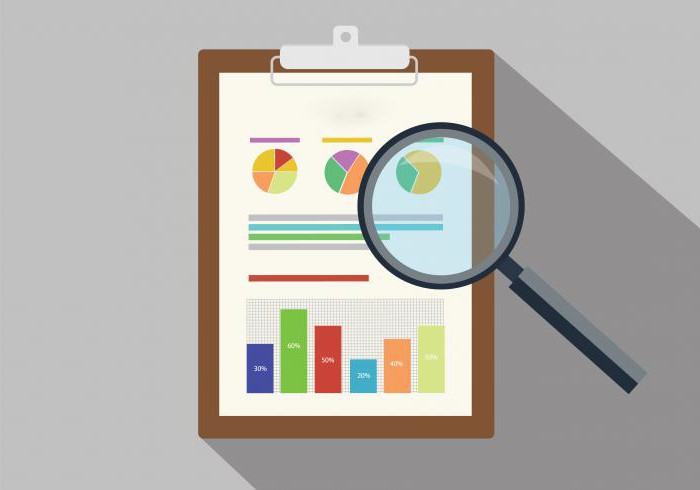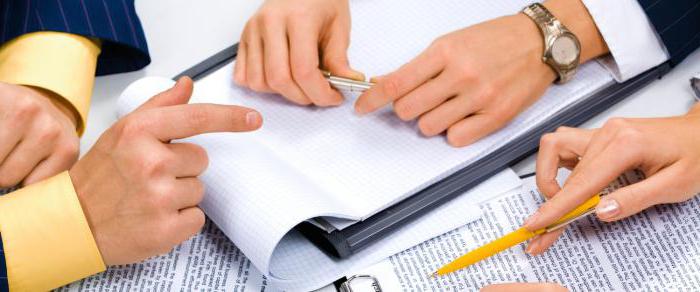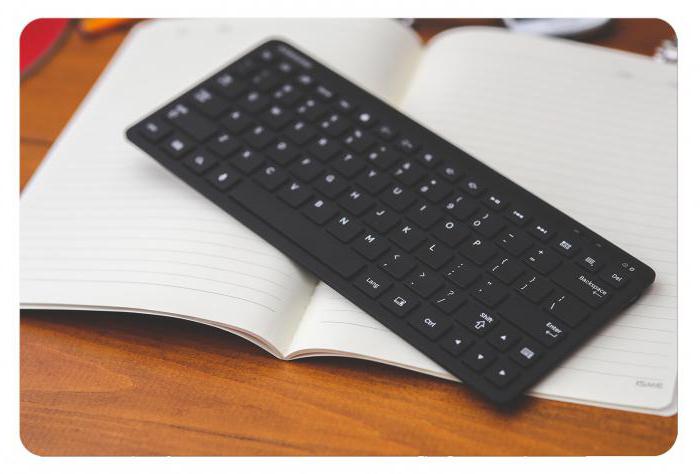Any modern enterprise as a result of the production process receives some finished product. At the same time, only items that are equipped and fully comply with the approved specifications can be attributed to ready-made ones. Products must be transferred to the warehouse, certified. In some cases, quality may not be confirmed by certificates, but by other documentation.

The finished product is important
As a rule, it is the finished product that is what the company offers to customers, customers. The composition may include various semi-finished products and components, work, services associated with industry and the production process. Industrial services are situations when a certain workshop releases steam, air, water, transports goods and otherwise serves the customer.
Accounting and finished product
Accounting in any modern company regularly conducts an audit of accounting for finished products and their sales. Key tasks:
- release control;
- accounting assortment, level of quality, quantity;
- accounting for items stored in the warehouse;
- organization of interaction with customers;
- fulfillment of shipping, sales, production plans;
- accounting of expenses associated with the sale, shipment of positions;
- control over sales results.
Inventory as a method of accounting
Through inventory, the audit of finished products and their sales effectively reveals whether the availability of products in the warehouse corresponds to the information available in the accounting system. At the same time, you can find goods spoiled, not properly designed, superfluous. Inventory reveals shortage and re-grading. During the check, all documents are examined, on the basis of which conclusions are drawn about whether the volumes of balances are correct, whether bills are paid on time, and whether there are delays.
Inventory is not just a method of detecting finished goods at the manufacturer’s warehouse, but also a calculation of volumes, measurements, clarification of weight, completeness and varieties, other parameters of stored items.

The main thing is the accuracy of the information.
The audit of finished products and their sales through accounting is organized so that the head of the enterprise regularly has accurate information on how large the production volumes are, how successfully manufactured goods are sold, what income the company can get if it sells everything that is located in its warehouses.
For effective inspection, it is necessary to introduce a special system designed to control finished products. This should consist of parts responsible for:
- plan;
- forecast;
- spending standards;
- accounting;
- production control;
- implementation.
Each element is closely related to others. An audit of finished product accounting is effective only when the developed and implemented system is created to meet the requirements of accounting and allows timely monitoring of the state of production processes and the availability of goods in warehouses, product plans, and product safety.
A reliable accounting system allows you to:
- control payment;
- draw up documents for products;
- to calculate the amounts associated with the production and sale of goods;
- determine the real costs of the production process;
- evaluate the profitability of products by subspecies;
- determine the availability of reserves and opportunities to reduce the cost of positions.
Divide and rule
Audit of finished goods production is carried out not only due to the implementation of the accounting system, but also due to the appointment of persons responsible for these tasks. Inside the company usually choose:
- freight forwarders;
- storekeepers.
Employees of the company are responsible for the vacation, reception of goods and products, they also draw up documents for all positions and make sure that the stocks are safe and sound. To be sure of the responsibility of employees, the head of the company concludes contracts with the staff that regulate liability.
At the same time, the audit of finished products and their implementation should be independent, which is why it is recommended to invite third-party specialists with the appropriate level of qualification. Such professionals check the accounting and identify how the company's activities are reflected in the financial documentation.
Nowhere without an audit
One of the most famous specialists in this field is the American scientist George Robertson. He repeatedly emphasized in his works that the goal of auditing finished products, as well as any other, is to reduce the risks that accompany entrepreneurial activity. This means that correctly and regularly conducted inspections can reduce business risks to an acceptable level that can be predicted with a high degree of accuracy. In addition, analysts can draw conclusions about how likely a positive business development is based on current conditions.

Audit of finished products minimizes the entrepreneur’s risks caused by inaccurate financial information that incorrectly reflects the quantity of products and their movement. During the audit, the company works more efficiently. You can make correct forecasts, as well as make management decisions based on complete data.
Check: cannot be overestimated
Any company can work reliably and without risks only if it has reliable data regarding finances and product reports. This allows you to know exactly the cost:
- what is produced;
- what is implemented.
If, for at least one of the cost categories, managers receive incorrect data, the income of the company as a whole is incorrectly estimated, the reporting is violated, the tax base is distorted. If the actual cost is too high, then it is highly likely that in the near future the volume of goods produced will sharply decrease. Avoid this helps the audit of finished products.
Verification allows you to:
- identify risk factors;
- estimate the volumes of the product not subject to accounting.
The latter is the goods that were produced, then sold, but were not reflected in accounting. Usually this is made from surplus purchased materials through:
- underestimated performance of suppliers;
- writing off more raw materials than necessary;
- replacing expensive materials with cheap ones.
The detection of such violations is one of the important tasks of increasing production efficiency. To solve it, an audit of the release and sale of finished products is required. Otherwise, there will be theft at the enterprise, and the quality of the product produced by the company will decrease, which will lead to a loss of business reputation and accumulated clientele.

Audit and abuse
According to statistics, the most often audit of finished products and financial results helps to identify violations in state enterprises. However, in recent years, trends are such that such abuses are recorded in private companies - AO, state of emergency, IP and other types. In many respects, this is associated with the following factor: if the sold product was made from a written-off surplus of raw materials, it is not taken into account, and profit is not taxed. Nor do you need to pay dividends to shareholders.
Audit of finished products reveals all these violations. Most often, it is carried out on the initiative of the interested party - shareholders or state authorities, law enforcement agencies, judicial instances.Experts agree that the work of the auditor in the context of such a conflict of interest is greatly complicated.

Audit: start
An audit of finished products begins with the control of such a fact: whether the product’s output is taken into account, how high-quality accounting is kept, what accounts are involved in this, and how certain receipts and expenses are classified.
The auditor should analyze the finished products and compare their assessments and opinions of the enterprise, identify the difference between the indicators and determine whether the management has a correct idea of the cost of goods. Actual and planned costs are almost always different, and the auditor's task is to identify this difference and provide managers with the correct data. To do this, compare the general ledger of the enterprise and the balance sheet data. Then check the magazine in the form of No. 10 and shipping lists.
The auditor checks whether the company correctly fill out documents, including warehouse ones. Particular attention is paid to the fact that they accompany the operation of delivery of goods to the warehouse. All positions must be reflected in the 221st account. Goods must be tested, equipped, accepted according to the documentation.
Release control
During the inspection, the specialist gets acquainted with how the company has established the process of acceptance and delivery of warehouse documents for a certain period. Often this is where “holes” arise in which unaccounted products are formed. This is not shown in accounting, therefore, conducting an audit of finished products, the specialist personally examines the quantity of goods, records the received data officially. For this:
- organize an inventory;
- determine the presence of unaccounted goods;
- match warehouse documentation.
Be sure to analyze the 221st account, since it is he who shows how the accounting department has the correct idea, and through it the company managers - about the volumes of finished products and their properties. At the same time, the auditor will have to familiarize himself with the conditions under which the goods are stored, whether they are of high quality for this premises, and what is the order of procedures within the framework of the storage process.
Verification Program
Normative regulation of the audit of finished products is carried out through the “Audit Regulation” adopted at the enterprise, as well as through orders and instructions of the head, obliging to conduct an inventory, as well as scheduled and unscheduled inspections. This process is accompanied by the execution of a large number of official papers, among which the verification program rightfully occupies the first place. This is drawn up by the auditor, discussed at a meeting of the company's management, approved by the general director (or other chief manager) of the company. The following is an approximate program.
Audit Activities | Where to get the data from? |
Control of the general ledger, balance sheet indicators | General ledger, balance |
Accounting control (analytics, synthetics) | Primary documentation, book on form No. 10, invoices, invoices |
Control of goods, product safety, inventory measures | Primary documentation, warehouse documents, statements, inventories, arrangements |
Warehouse control | Primary documentation, warehouse documents |
Control of how well the product is capitalized | Primary documentation, invoices, book in the form of No. 10, fence cards and limits |
Cost control | Accounting policy |
Audit: tasks, goals
Verification is an effective tool for identifying the quality and accuracy of posting of positions in warehouses. Managers get an idea of whether the revenue is calculated correctly, what is the real cost. At the same time, they examine:
- completeness of capitalization;
- position evaluation;
- legality of work, accounting;
- Does the company comply with tax laws.
Most often, the company reveals the following shortcomings:
- primary documentation is not maintained or is being maintained incorrectly;
- posting is not done on time;
- the inventory is organized in violation of the deadlines;
- revenue is calculated without following the rules of the accounting policy;
- correspondence of accounts is erroneous.
Audit allows you to control accounting and identify how much it reflects the real situation in the company. This is necessary for making effective managerial, commercial decisions.
What deserves special attention?
When conducting an audit of the finished product check:
- whether internal documents are drawn up correctly at the enterprise;
- how to take into account production, sales costs;
- how to write off expenses;
- Does contractual discipline comply with applicable laws?
- legality of accounting at the enterprise;
- whether the requirements of the Tax Code are taken into account;
- accounting policies and their effectiveness.

What is audit based on?
Verification is carried out based on the following regulatory documents:
- Russian codes (tax, civil, federal);
- internal regulations (on accounting, auditing, reporting);
- guidelines governing accounting;
- PBU 18/02, 10/99, 9/99;
- uniform forms;
- charts of accounts.
What mistakes can be made?
As statistics show, most often during verification they find incorrectness in the following areas:
- finished products are evaluated using a methodology that does not comply with accounting policies;
- the company on the balance sheet takes into account products made from tolling raw materials;
- products released, sold, sent to customers are not fully accounted for, untimely;
- analytical accounting as such is absent;
- the inventory is carried out poorly;
- spoiled, outdated products are not taken into account correctly;
- the idea of trading practice with the company is erroneous (usually associated with the use of tolling raw materials in the work process).
Audit: Fundamental Principles
The result of only such an audit, which is organized with the main principles of the audit, will be effective, and the principle of complexity takes first place among them. This means that only an event that takes into account all stages of the product life cycle within the enterprise will show real results. The auditor should study everything from the manufacture of the goods to their dispatch to the buyer. It should link production, sales steps, and reflect this in the verification documentation.

In addition, the principle of audit is continuity. Since there are usually several reviewers at a company, different tasks are chosen for them, linking the stages according to the timing so that all business entities are in the focus of attention. If the audit should be extended over a long period of time (for example, a year), the audit program is adjusted from time to time.
Finally, the third principle of audit is the principle of optimality. This means that the auditor must identify a verification plan that will be effective in verification, will cover the maximum amount of information, equally satisfy the interests of both the audited company and the audit firm.
To summarize
Any company striving for the efficiency of the workflow and maximizing profits should regularly conduct internal and external audits. This will help to control the situation in the company, exclude employees who violate the rules, prevent violations of the laws and use of official position in the interests of private individuals. First of all, the importance of the audit should be realized by company leaders, since it is they who can initiate the audit and ensure that the staff helps the auditor cope with its difficult work.